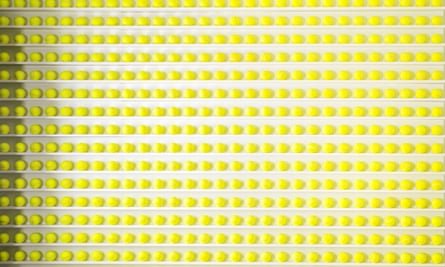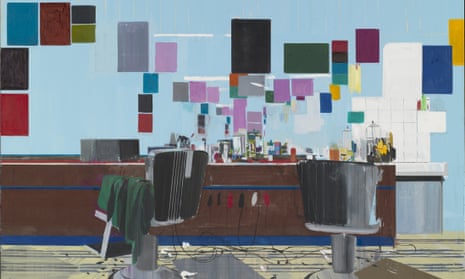Exhibition of the week
Life Between Islands
Alberta Whittle, Sonia Boyce and Hurvin Anderson are among the stars of what promises to be a definitive survey of Caribbean British art since the 1950s.
Tate Britain, London, from 1 December to 3 April
Also showing
Alvin Baltrop
Truly arresting photographs of gay life around the ruinous Hudson River piers in 1970s and 80s New York, taken by a voyeur of genius who never got his due in his lifetime.
Modern Art Bury Street, London, until 22 January
Salvador Dalí to Jenny Saville
A showcase of recent acquisitions by Scotland’s modern art museum, which also includes pieces by Alberta Whittle, Dorothea Tanning and Bridget Riley.
Scottish National Gallery of Modern Art (Modern One), Edinburgh, from 27 November
Journeys
A look at how contemporary art helps the healing process at Chelsea and Westminster Hospital, with Brian Eno among the aesthetic surgeons.
Saatchi Gallery, London, until 13 January
Sirens
Margate artists Sophie von Hellermann and Anne Ryan collaborate on a new installation that looks out on the winter sea.
Turner Contemporary, Margate, until Spring 2023
Image of the week

Mayfair Tennis Ball Exchange, Stephen Friedman gallery, London
David Shrigley’s new show Mayfair Tennis Ball Exchange is an evolving work of psychedelic op art involving 12,166 tennis balls – new at first but intended to be exchanged for used balls, one by one, over the course of the exhibition, by members of the public.
Read his interview all about it here
What we learned
Fashion photographer Helmut Newton had a lasting influence on visual art
While fashion photographer Fabrice Monteiro’s best shot summons a spirit from a rubbish dump
Lubaina Himid has spoken to the Guardian about her early life … and explained the meaning of some of her paintings … which are on show at Tate Modern in London
Kehinde Wiley spoke to the Observer ahead of his show at the National Gallery
Andy Warhol’s and Jean-Michel Basquiat’s friendship is being dramatised for the London stage … and they aren’t the only artists whose stories make good drama
Jarman award-winning video artist Jasmina Cibic is concerned for Europe
An ambitious exhibition at Nottingham Contemporary envisions a strange future
Tech advances could help the Parthenon marbles return to Greece
Indigenous Australian photographers are exhibiting in New South Wales
Photographer Steve McCurry focuses on the children of the world … while Natalie Grono focuses on her own daughters … and Pia Bramley sketches the truth about new motherhood
René Magritte was a bit of a mystery, Albrecht Dürer liked to travel and Belkis Ayón was a giant of Cuban art
A priceless ancient Roman mosaic spent 50 years as a coffee table
Tim Sumner wants to tell a social history of Britain through paper bags
Masterpiece of the week

Paul Cézanne: Still Life with Apples (1877-78)
These are some of the greatest apples ever painted. Cézanne does not aim for a crisp photographic realism as, say, Caravaggio does in his paintings of fruit, but instead paints the process of trying to see, feel and share these apples. You sense the physicality of every brushstroke as if it were a deep thumb gouge in a lump of clay. You follow his relentless scrutiny of the apples’ solid substance, their marvellous unique existence - their applehood, or appleness. His colours don’t float outside the apple but penetrate its being. Cézanne looks past the skin of life and sees its core.
Fitzwilliam Museum, Cambridge
Don’t forget
To follow us on Twitter: @GdnArtandDesign.
Sign up to the Art Weekly newsletter
If you don’t already receive our regular roundup of art and design news via email, please sign up here.
Get in Touch
If you have any questions or comments about any of our newsletters please email newsletters@theguardian.com
